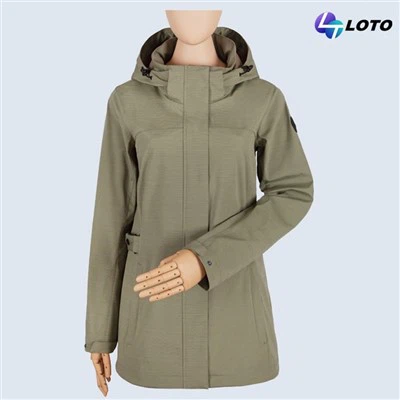When the temperatures drop, one of the most popular options for insulation and warmth is the down jacket. However, one question that often arises when discussing these jackets is whether they can get wet. This article aims to explore the consequences of a down jacket getting wet and how to navigate potential issues.
The Nature of Down
Down jackets are filled with the soft, fluffy under feathers from birds such as ducks and geese. This down has incredible insulating properties due to its ability to create a large number of tiny air pockets, trapping warmth and resisting the intrusion of cold air. However, while down is excellent at providing insulation, it comes with a notable downside when it comes to water exposure.

Down and Water: A Problematic Pairing
The short answer to whether down jackets can get wet is yes, they can—but they shouldn't. The main issue lies in the inherent nature of down itself. When down gets wet, the feathers clump together, losing their loft—the fluffiness that allows for the trapping of heat. Consequently, the jacket's insulation properties decrease significantly.
In addition, once a down jacket becomes wet, it takes a relatively long time to dry. Prolonged dampness can cause mildew or mold to develop, potentially damaging the down and leading to an unpleasant odor.
Waterproofing Measures
In response to the water-related challenges of down jackets, manufacturers have implemented various measures to enhance the water resistance of these jackets:
Water-Resistant Shells: Most down jackets come with an outer shell made from synthetic materials like nylon or polyester. These materials can be treated with durable water repellent (DWR) finishes that help water bead up and roll off the fabric, preventing the down from becoming wet during light rain or snowfall.
Hydrophobic Down: Some down jackets are filled with hydrophobic down, which is down treated with a durable water repellent. While it doesn't make the down waterproof, this treatment helps it resist water, dry faster when wet, and maintain some of its insulating ability even when damp.
Dealing with a Wet Down Jacket
If your down jacket does get wet, it's crucial to handle it properly to prevent damage. Avoid wringing or twisting the jacket, as this can damage the down clusters. Instead, gently squeeze out as much water as you can.
To dry the jacket, lay it out flat or hang it up in a well-ventilated area. If you're using a dryer, use a low heat setting and consider adding a few tennis balls to the drum. These can help break up the wet down clusters and restore the jacket's loft as it dries.
The Final Verdict
So, can a down jacket get wet? Technically, yes. However, it's important to avoid getting your down jacket wet whenever possible. If you anticipate being in a wet environment, consider wearing a waterproof shell over your down jacket or opting for a jacket designed to withstand such conditions. With the right care and handling, a down jacket can provide you with exceptional warmth for many winters to come.







